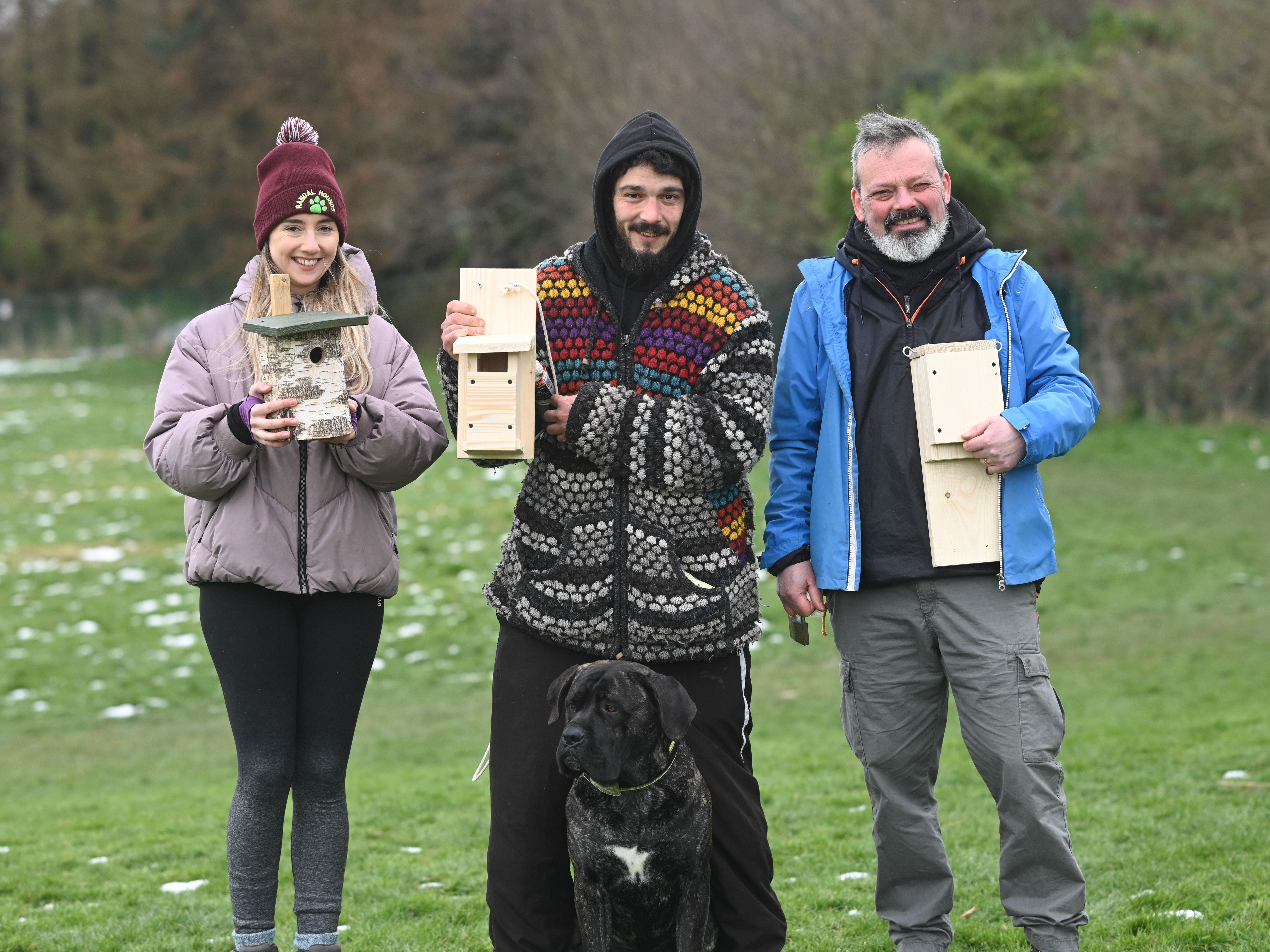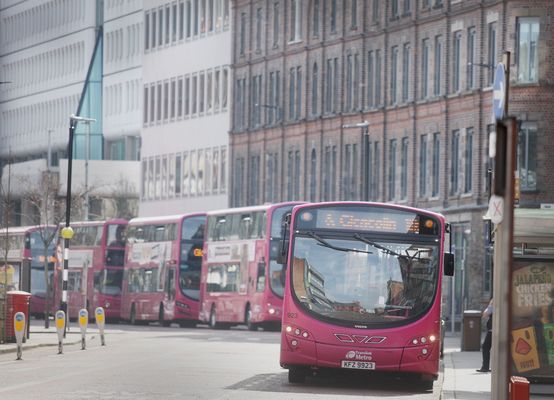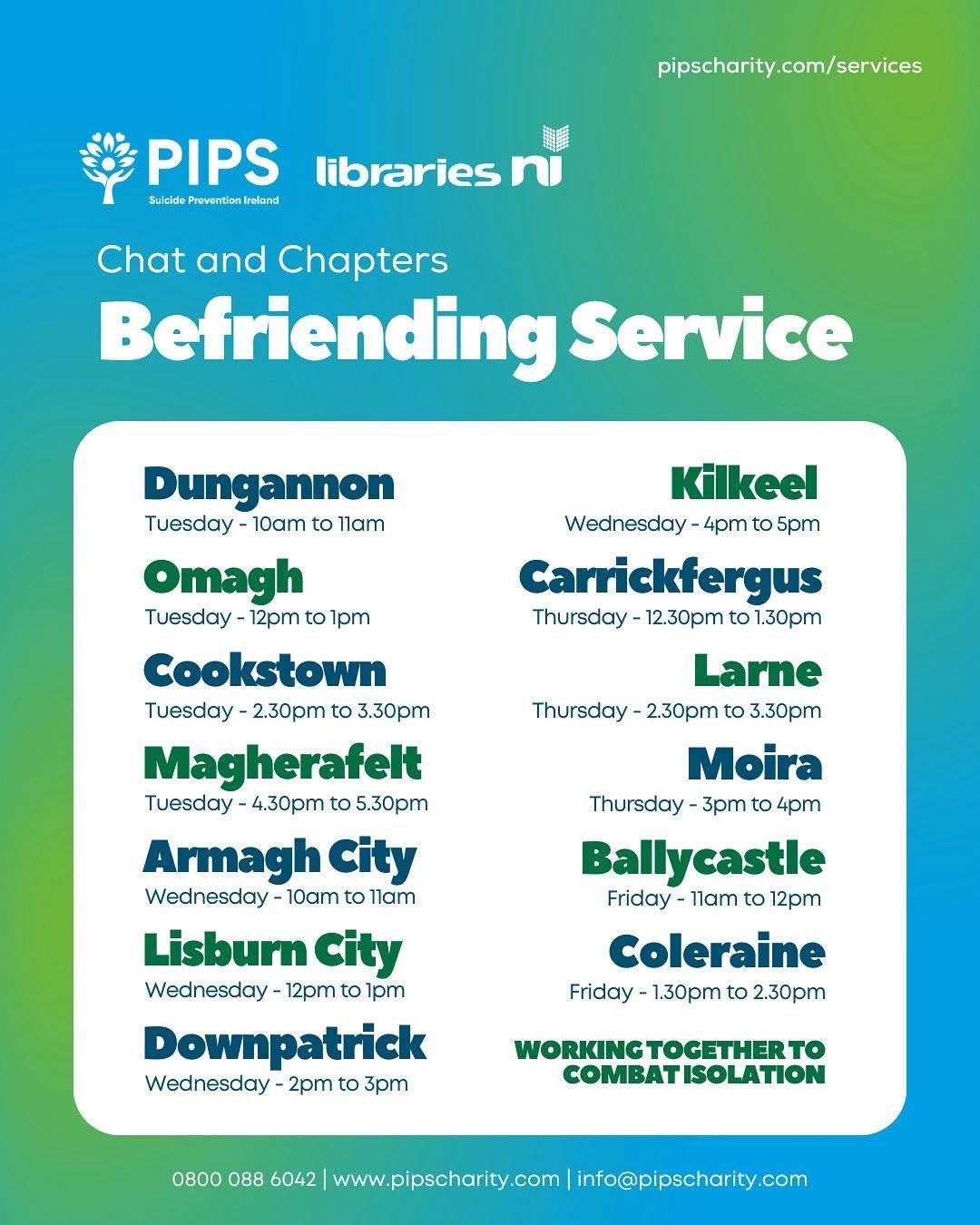PLANS are alive to develop a neglected field in South Belfast – with a community garden and nature reserve amongst the proposals.
Friends of the Field – a community group in South Belfast dedicated to improving and protecting the environment of a field at Stranmillis Embankment near the Lyric Theatre – have received £10,000 from the National Lottery Community Fund.
The group are working alongside Belfast City Council to develop on the Horizon 2020 EU ‘Upsurge’ project, which focuses on testing nature-based solutions in five demonstrator cities across Europe, with the aim of sharing learning and good practice on pollution alleviation, citizen health and climate resilience.
BUILDING: Alicia building a birdhouse for the trees beside the field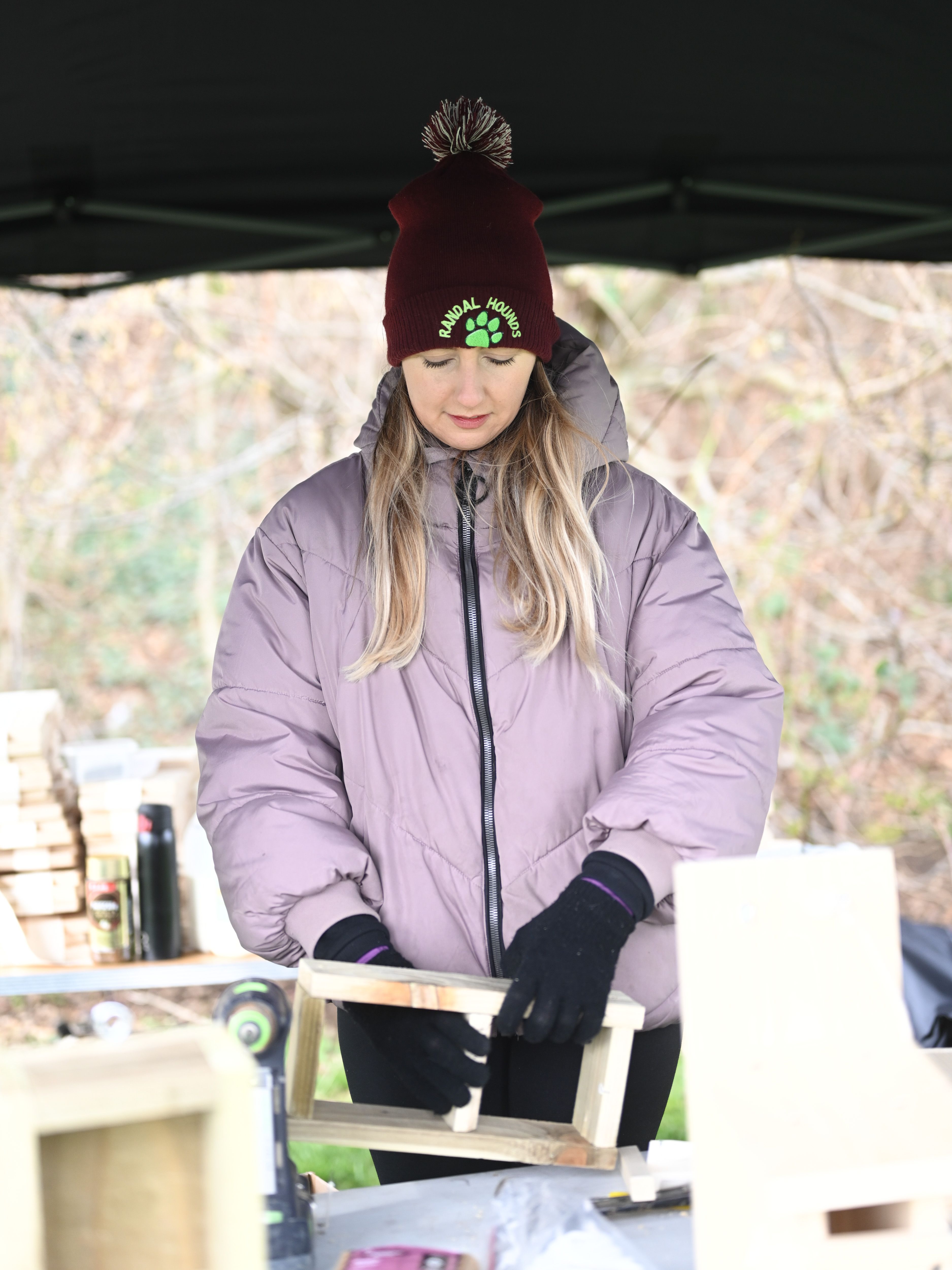
Queen’s University have plans to work on soil enhancement, food production and carbon testing at the site as it was for nearly 100 years a dumping ground for industrial run off.
Throughout its years the site has been used for many purposes such as a dump, a site for prefabricated housing, which was erected for families bombed out during the Blitz, and later a site for festivals and a circus.
In recent years the Council erected a fence sealing off the far bank from local houses and this in turn allowed nature to thrive behind the fence.
Colin Shaw of Friends of the Field said the a lot of the soil at certain areas of the field remained contaminated with pollutants such as lead from its days as an industrial dumping ground and also asbestos from the prefabricated housing.
Come along next time, it's fun (with moving images and music from our media executive @naimsra) pic.twitter.com/9ibiv3DQwr
— FriendsOftheField (@friendsoffield) March 11, 2023
This month Friends of the Field have been out preparing birdhouses, bat houses and bug hotels for the abundance of wildlife which now live behind the fence. Also along to advise was ornithologist Peter Cush who noted the sounds of greenfinches who said the trees were also home to goldfinches and redpoles.
BIRDS: Ornithologist Peter Cush points out greenfinches which were calling out in the trees by the field
Colin said the current plans for the group were to create community gardens which will allow local residents to grow their own food, alongside a flax and wildflower meadow with later plans for a children's play park and outdoor amphitheatre and market.
Speaking on the environmental importance of the site Colin outlined the short and long-term plans for the area which will see the area transformed and to regenerate the field onto brighter pastures than its industrial past.
“We have a fence in the field which was erected 20 years ago. It looks to us like it’s tired and neglected but actually behind it there is a mini wilderness for foxes, badgers and birds so it’s very important that it remains closed off to protect the wildlife that thrives there.
“We want to see a garden and raised beds being built here. We will need raised beds because the current ground is contaminated. Up until around the 1950s this field was used as a dumping ground. Coal and ashes were dumped here in large quantities.”
BUG HOTELS: Naomi with a handmade bug hotel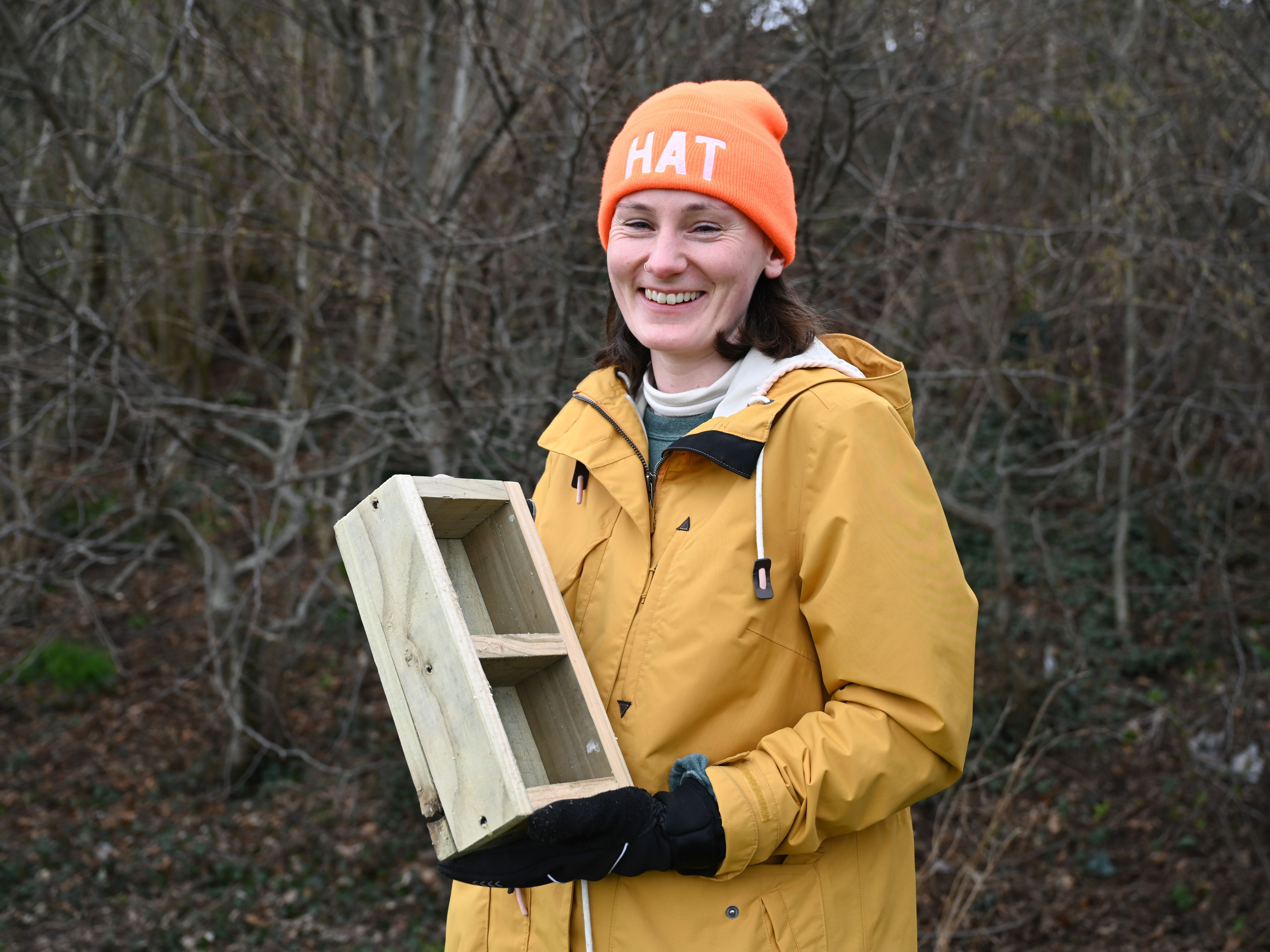
Colin added that the Friends of the Field would continue working to see the area transformed.
“This was an industrial area for a very long time and Queen’s University have analysed the soil and found it is still contaminated with lead and zinc etc. The bottom of the field used to be a rope and tar factory and there was also asbestos-filled temporary housing put up after the Blitz. The Lagan was far more industrial in those days with brick factories, but oddly there was more wildlife then.
“We’re hoping this initial funding will help us put down some growing beds which will be the first step in seeing the field come to life.”

